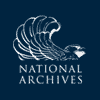Cornelius C. Blachly to Thomas Jefferson, 31 October 1804
From Cornelius C. Blachly
31st. of the 10 mo. 1804
Respected friend;—
With diffidence I address this letter to thee, with a scheme for an american alphabet. The apology for my presumption, is my being perswaded that no scheme for an alphabet of this nature would be successful without the recommendations of some of the most illustrious literary characters in America.—besides I had no opportunity of showing thee the present scheme but by my neighbor Adam Boyd one of our representatives in congress. I am sorry to trouble thee during the session of congress,—and shall be very sorry, if I have presum’d too far on thy benevolence, delicacy, or condescention.
With sentiments to thee of very great respect and esteem;—I am thy friend—
Cornelius C. Blachly.
County of Bergen—New Jersey.
P.S. My friend Adam Boyd will obligingly call on thee for the return of the manuscript when thou art done with it.
RC (DLC); endorsed by TJ as received 17 Nov. and so recorded in SJL. Enclosure not found, but see below.
Cornelius C. Blachly (ca. 1773-1831) was a Quaker physician, born in New Jersey and educated at Columbia College. His later years were devoted to social reform based on “Christian ethics, republican politics, and the labor theory of value.” He wrote several treatises on the subject and was a founding member of the New York Society for Promoting Communities, which sought to erect commonwealth societies based “wholly on the social, impartial, and unselfish principle.” Blachly shared his utopian vision with TJ in 1822, at which time he signed his name “Blatchly,” a variant spelling he had adopted by at least 1815 (Sean Wilentz, Chants Democratic: New York City and the Rise of the American Working Class, 1788-1850 [New York, 1984], 158-61; New-York Spectator, 13 Dec. 1831; Cornelius C. Blatchly to James Madison, 6 May 1815, in DLC: Madison Papers; Blatchly to TJ, 6 Oct. 1822).
The scheme that Blachly sent to TJ may have been a precursor to his “new system of orthography,” published in approximately 1814 (Michael H. Barton, Something New, Comprising a New and Perfect Alphabet Containing 40 Distinct Characters, Calculated to Illustrate All the Various Sounds of the Human Voice [Harvard, Mass., 1833], 31).

![University of Virginia Press [link will open in a new window] University of Virginia Press](/lib/media/rotunda-white-on-blue.png)
